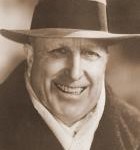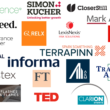Many traditional media companies are tormented by the twin challenges of a glorious, imperious past and the disruption of digital natives. Twitter, Facebook, Amazon, LinkedIn, and BuzzFeed are creating new information and entertainment markets, while squeezing audiences and revenues from traditional channels. Google has, single-handedly, transformed the advertising industry. And these global digital companies – straddling big data, ecommerce, social networking and multimedia – have changed the very definition of media.
But some of the big winners are not new. Four of the world’s most successful legacy operators are now in their third century and were in ‘media’ when it was all about newspapers, printing presses and proprietary content:
- London’s Daily Mail was launched in 1896 by Alfred Harmsworth (later Lord Northcliffe) as the world’s first popular newspaper. It remains one of the UK’s best-selling dailies but is part of a $3bn revenue media group which includes Mail Online (still the world’s largest newspaper site), the free daily Metro (the UK’s most profitable paper) and fast-growing consumer and B2B digital services. Newspapers remain stubbornly at the heart of DMGT, even though the large majority of its profits now come from B2B media.
- In the US, former school teacher and news reporter James Cox built his Ohio-based newspaper business around the Dayton Evening News which he bought for $26,000 in 1898. Today, Cox Enterprises is the third-largest cable TV company in the US and a leading broadband provider of video, data and voice. It has $15bn revenues and 50,000 employees across telecoms and media. Its integrated media group operates across 15 television stations, a cable channel, 86 radio stations, four metro newspapers, 12 non-daily publications and more than 100 digital services.
- Schibsted, founded in Oslo in 1839, leapt into the digital century from a seemingly unpromising Scandinavian base of long-established daily newspapers. The newspaper-centric media group employs almost 8,000 and is now the pace-setting world leader in online classified advertising with digital operations in 27 countries and revenues of $2.5bn.
- Arguably, the world’s most successful content-based, diversified media group was also the first, started when 24-year-old

Citizen Hearst: the world’s first ‘media’ tycoon (William) Randolph Hearst bought the San Francisco Examiner from his father in 1887. He moved to New York and, in the early years of the twentieth century, built what is now the Hearst Corporation into the world’s largest newspaper and magazine business. He was a pioneer in movies and newsreels – and was immortalised in the movie Citizen Kane.
The Daily Mail (DMGT), Cox, Schibsted, and Hearst (like their 20th century peers News Corp and Axel Springer) share the newspaper heritage, a certain media versatility – and the steadying hand of long-time family control (even though all but Hearst and Cox are public companies). But the $9bn revenue Hearst may be the “best” of the lot – and the role model for one-country news groups everywhere – because it is an increasingly versatile global player across a wide-ranging media portfolio but with its roots so clearly in the business started 126 years ago in California.
Today, Hearst Corporation comprises some 200 companies with 20,000 employees in more than 150 countries. Its portfolio includes:
- The world’s largest publisher of monthly magazines, with 40 brands across wholly-owned companies in the US and UK, and almost 300 international editions published in more than 80 countries. Major brands include Good Housekeeping and Harpers Bazaar, Cosmopolitan, The Oprah magazine, House Beautiful, Redbook, Popular Mechanics, Marie Claire, Esquire, and Elle. One-time family magazine Cosmopolitan was bought in 1905, and sexualised with dramatic commercial effect by editor-in-chief Helen Gurley Brown in the 1960s. It is now the world’s most successfully-franchised magazine with 61 international editions and 78million readers in 100 countries.
- More than 30 television and radio stations, reaching 18% of US homes.
- Major joint ventures in cable TV including substantial shareholdings in ESPN and the A&E networks
- Business information services, principally across the banking, pharmaceutical, and automotive industries
- 15 daily and 36 weekly newspapers, principally in Texas and New York state
- Strategic investments in digital businesses including Pandora, Brightcove, and BuzzFeed (in which it has 10%).
Everything about Hearst spells long-term.
The company’s strong magazine brands have a direct relationship to Randolph Hearst who became the first major newspaper proprietor to publish magazines. His movie studio was named Cosmopolitan Productions after the magazine he had acquired 14 years before – and which is now Hearst’s biggest brand.

Even the stunning Norman Foster-designed Hearst Tower in Manhattan owes its location to the founder’s 1920s conviction that a bridge would be built across the Hudson River. He had expected nearby land values to increase sharply so bought a plot for his offices. The bridge never materialised but, all these years later, his company’s spectacular new headquarters (pictured, right) is an award-winning 42-floor glass-and-steel tower atop Hearst’s six-storey 1930s art deco headquarters.
So the memories are everywhere. But, inevitably, the company is totally different to the one built by Randolph Hearst. The big city newspapers that gave the founder his profits, prestige and power have been closed, sold or are struggling to survive. But the company has invested well in broadcasting, cable TV, digital technologies and international magazine brands.
This revitalisation has been largely crafted by Frank Bennack, the youngest of his three predecessors when he was appointed President and CEO, aged 46, in 1979. This Hearst careerist, who stepped back from CEO in June 2013, transformed the company’s profits and prospects with a whole series of deals which made it a major broadcaster and international media group with dramatically reduced exposure to its legacy of US newspapers.
One of Bennack’s last big deals was in 2011 when Hearst paid Hachette/Lagardere, of France $919m to buy more than 100 worldwide magazines including Elle.
That was a particularly sweet transaction because it came four years after Hearst lost out to Bauer in the UK bidding for EMAP consumer magazines. Hearst’s EMAP offer had been trumped not by a higher bid but by the German group agreeing also to buy EMAP’s radio stations in a combined deal. Hearst’s price would have been similar but the Hachette deal brought it 102 magazines including Elle and Elle Decor in the US, UK and 13 countries across Europe and Asia. In addition to becoming the world’s leading publisher of monthly magazines, the deal made Hearst the second largest publisher in the US (after Time Inc), leapfrogging long-time rival Conde Nast.
The intricate multinational deal brought worldwide (ex France) rights to Elle’s network of 44 licensed editions in 60 countries and gave Hearst new muscle against Vogue (which has 23 international editions) in upmarket advertising sales. The upshot is that Hearst’s magazines business is now truly international, with 50% of revenues outside the US and with exposure to most of the world’s fast-growing markets. It was, strategically, a much better deal for Hearst than loading up with EMAP’s UK portfolio, dominated by troubled weekly magazines. Perhaps even Bauer now agrees. Their contrasting fortunes are underlined by the fact that Hearst is, anyway, getting close to overhauling Bauer (its publishing partner in Australia and New Zealand) as the UK’s largest magazines group.
But even that particular steal of a deal was nothing compared with Bennack’s coup, back in 1990, when he paid RJR Nabisco the seemingly full price of $170m for its 20% stake in ESPN, the world’s most successful sports broadcaster.

Over the past 23 years, ESPN has thrown off huge amounts of cash for Hearst and its 80% partner Disney. Some years, it has generated 50% of Hearst’s total profit. And now, analysts reckon that the 20% shareholding may be worth at least $13bn; and that Hearst’s cable TV interests (many of them also in partnership with Disney) may have a total value of more than $20bn. A momentous increase in Hearst capital in 20 years under Frank Bennack.
But the quietly-spoken Texan is about so much more than deals. He is credited with changing the whole culture of Hearst into a company that:
- Makes long-term investments in strategically important areas and does not cut and run when things get tough
- Is a good partner with other companies especially in unfamiliar sectors or geographies
- Is content to recruit senior management from competitors, even though senior people don’t often leave Hearst
- Is collegiate, confident but corporately modest and even under-stated
Bennack’s twinkling eyes, unfailing courtesy and quiet energy run through Hearst Corporation. As does his intolerance of debt, and his knack for striking savvy partnerships. Hearst executives breathe loyalty to their colleagues, partners and values. Nobody, of course, acknowledges that it’s almost the polar opposite of the strident, personalised, bruising newspaper group that first carried the Hearst name. But, then, this family-owned company’s tangible ethics should not obscure Bennack’s decisive, hard-nosed achievements as CEO. Insiders say: “Before Frank took over, Hearst had a reputation as a sleepy publishing company. He has assembled a tremendous group of media assets. He has quietly and smartly created a great company, all the while with ego in check. They produce, recruit and support very competent managers.”
Bennack has always had a clear vision for his executives: “It’s more important to focus on what you can do going forward rather

than dwelling on past achievements. My most important criteria for management success is not having people who arrive in top jobs thinking they got there as a reward for what they did. Instead, we want managers who think that they are there because of what they can do in the future and what opportunities exist for them.”
He has led Hearst for a spectacular 28 years, increasing revenues 12 times and growing earnings more than 30 times, through investments, acquisitions and startups. More than 90% of profits are said to be from businesses added during Bennack’s reign. There have been failures, of course, notably its $20m burned on the joint venture to publish Tina Brown’s disastrous Talk magazine but they’ve been dwarfed by the huge gains in digital, broadcasting and magazines.
At a time when many media groups are struggling to hold profits, Hearst is on fire. This private company releases few financial details, but it is thought that 2013 revenues may have hit a record $10bn – perhaps 10% up on 2012 and five times their level in the centennial year of 1987. Digital revenues alone will this year be close to the total of all sales in 1987.
It’s a great time for the 80-year-old Frank Bennack to step down. But, then, this is the second time he has passed the baton.
The first handover was in 2002 when Victor Ganzi, longtime Hearst lawyer who had been Bennack’s deputy for 12 years, became CEO. He lasted just six years. The sudden announcement of Ganzi’s departure quoted “irreconcilable policy differences with the Board of Trustees about the future direction of the company,” with reported clashes with the Hearst family over continuing investment in newspapers (including some $300m in unpromising acquisitions) – and too little digital activity. That – and some scarcely-concealed personal animosity – sparked the coup in a very private company that does not often fire people, let alone its bosses. The likeable Ganzi’s abrupt exit and the 75-year-old Bennack’s decision to step back into the CEO role illuminated the unusual ownership structure that had been put in place on Randolph Hearst’s death in 1951.
Under the terms of the founder’s will, the Hearst Corporation is owned by the Hearst Family Trust with a 13-member board of trustees, only five of whom can be family members. Randolph Hearst created the trust to give his heirs ownership of the company but limited day-to-day control. The long-term financial growth of the business shows he got it right. But some family members have periodically threatened legal challenges to the trust, which will not dissolve — and give the Hearsts direct control of the company — until the death of the last Hearst heir who was living in 1951, which might take another 40 years.

Legal action by Hearst beneficiaries risks disinheritance under the terms of the trust but that has not stopped complaints about insufficient access to financial records. Patricia (Patty) Hearst (Randolph’s grand-daughter who was famously kidnapped and “joined” a bank-raiding revolutionary gang in the 1970s) gave some clue to family feeling about the Trust and the departed CEO in a rare interview.
Patty Hearst claimed that family members were not being sufficiently informed about the trust: “I call it the Hearst family secret, not the Hearst Family Trust.” At the time of Ganzi’s departure, she said that Bennack had been more forthcoming with information for family members than his predecessors had been. Victor Ganzi, though, was said to be markedly less open. It is easy to believe that the urbane Frank Bennack found the Hearst family and its complicated trust fund easier to navigate than his short-lived successor.
A more troubling chapter for Bennack, however, was Hearst’s purchase of the San Francisco Chronicle, rival of the original flagship San Francisco Examiner. But Hearst wanted either to sell or close the Examiner and to buy the larger Chronicle instead. By 1999, it had a deal. But an anti-competition inquiry led to a trial and embarrassing revelations that the Examiner publisher had promised the San Francisco Mayor favourable coverage if he supported the Chronicle’s sale to Hearst. It all sounded like something from the swashbuckling days of Randolph Hearst rather than the 21st century corporate role model created by his successors. Hearst was ordered to subsidize local publishers with $66 million to sustain the Examiner under independent ownership, effectively raising the Chronicle’s acquisition price by 10%.
Steve Swartz’s 2012 appointment as only the seventh CEO in the history of the Hearst Corporation marks a generation jump: he is 10 years younger than Victor Ganzi when he quit in 2008. Swartz had been a star reporter on the Wall Street Journal and then editor of Smart Money, its joint venture magazine with Hearst, before a 20-year career flew him through the ranks of Hearst’s newspaper business. His top team is a neat mix of Hearst lifers and “immigrants” including some sparky digital recruits.
The new CEO has some familiar challenges: how to grow digital profits to compensate for the loss of hard copy revenues. To put it another way: how can Hearst make new profits from magazine brands like Cosmopolitan, Elle, and Good Housekeeping in an era when there is less demand for lean-back reading and “flat” advertising? Then, there’s how to ensure that the company’s cable TV cash cows become seriously pro-active in the burgeoning world of online viewing? And there’s more.
Hearst has long been a pace-setter in international magazine licensing. But its impressive roll-out of magazines in many

geographies and languages will need to develop international online services that will inevitably undermine the profitable network of country-by-country partnerships. But, then, magazines have a lot of changing to do. It is easy to believe that 1) there will be fewer publications, read by fewer people – in digital or hard copy; and 2) Hearst brands like Elle, Cosmopolitan and Good Housekeeping will be prominent (and profitable) among the survivors. But the competition for readers and, especially, advertisers will intensify. It will be powerfully instructive to see how Hearst now develops its flagship brands Cosmopolitan and Elle.
Hearst has bought and launched well in magazines, is working hard – for example – to develop digital subscribers discreet from conventional magazine readers, and is now fighting to build global advertising campaigns across its ‘multi-platform’ network. And there may well be further acquisitions, for example, from the soon-to-be-floated Time Inc.
But the company’s ability really to restore solid growth in magazine profitability may require an especially adventurous approach to content marketing and perhaps even a heightened approach to branded merchandise – putting its much-loved women’s interest brands to work on behalf of the consumer companies with the largest marketing budgets. But, even for the magazine market’s brightest big publisher, the ‘native’ fusion of traditional editorial and advertising silos will not be easy.
And, for all Swartz’s prediction that newspaper profits will be increasing for the third consecutive year, Hearst’s new CEO knows that growth may not continue much beyond new waves of consolidation and cost cutting. But Hearst Corporation has plenty of other opportunities.
The US company might choose to apply its considerable digital talent spotting skills (Think BuzzFeed!) to businesses it will actually own and manage rather than merely invest in. The company also has similar challenges to other legacy media businesses: how to maximise high-margin hard copy revenues while seeking to build new digital channels. This may often be simpler with new digital-only or video-only brands rather than challenging the traditions and profits of existing ones. That’s why Hearst will need to be as committed to launching ‘pure play digital’ services as to the digitalisation of existing magazines. Some brands are so enmeshed with their hard copy frequency: moving branded digital services from ‘monthly to the moment’ is not easy when you’re still publishing monthly under the same banner.

The best growth opportunities for Hearst’s financial journalist turned CEO may come from expansion of the company’s business and professional information services. Swartz acknowledges the way that Hearst has invested in B2B media for almost 20 years, latterly with a 50% stake in Fitch Ratings and ownership of global medical information companies like First Databank and Map of Medicine: “Our focus is on data and analytics and software used by our customers in their day-to-day operations. These businesses have a very strong growth rate, as there is more and more demand by businesses to use data to make smarter decisions. And we are looking to acquire more.” It, presumably, goes without saying that such healthcare diagnostic and information systems have some potential synergies back in Hearst’s consumer markets. And, what goes for health may also count for education.
However, the company remains a relatively small B2B player, in international terms, and is exposed to a random handful of sectors and geographies at a time when observers are predicting the break-up of substantial B2B conglomerates on both sides of the Atlantic. Swartz must have been watching with interest as fellow newspaper legacy group DMGT has increasingly become an international B2B player with powering performances from Euromoney, the US-based Risk Management Solutions, and trade exhibitions. It is 90 years since Randolph Hearst copied Alfred Harmsworth with his launch of the New York Daily Mirror aping the London tabloid. Perhaps these two high-performing traditional media companies will once again be watching each other closely.
And the ever-youthful Frank Bennack is still there, in his new role as ‘executive vice chairman’: ” We’re a private company with a long-term horizon because of an ownership trust that won’t expire for a long-time to come; a devoted management team, many of whom like to be engaged in what we do even after they step down; and markets and lines of business that give us opportunities to grow and expand. We also have an appetite for whatever is new out there. We need to make sure we put bets down on enough new businesses to give us the diversification in the future that we have today. Hearst is, without a doubt, one of the best-known names in publishing, and now also in television and entertainment.” You can almost hear the challenge.
For the world’s best media group, an exciting new era has begun.





Interesting article, although I think IPC and Immediate would question where your comment leaves them in the ranks of UK’s largest magazine publishers. I was under the impression that Hearst UK was less than 50% of the size of both Bauer and IPC and a fair way behind Immediate as well.